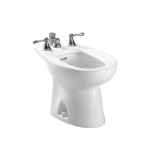What you've discussed with your experience is the opposite - having two sets of equipment for one group. This could work, with dedicated maintainers, and the US does this with their forward deployed suites. This is completely out of the CAF's league though, based off our current stocks and organizations.
This discussion of "sharing" fleets on this thread is overly focused on RCEME folks turning wrenches, and is missing out on the details behind unit maintenance plans, "pride of ownership" and maintenance culture, unit training plans, PCF requirements, PM/CM maintenance schedules, and the small windows for collective training activities. I wouldn't want to be the CQMS with a SNAC verification when some other organization is playing with the stuff I am accountable for.
Not discounting anyone's experience, but folks on here who have managed a modern AFV and the training and maintenance bill that comes with it seem to get the above points. There seems to be an assumption that a fleet of LAVs is just sitting around, waiting to be jumped in. In reality, if the vehicle isn't being used for CT, its being used for PCF/IT, or its in maintenance, or its being "ring-fenced" so that it is available. The idea that a second unit's worth of people could just hop in and achieve the same individual and collective training off a single fleet is trying to "squeeze 10 pounds of s**t into a five pound bag." Don't believe me if you want, just dial up the Ops O of a battalion and ask what his or her VOR and fleet management plan is.

www.armytimes.com



